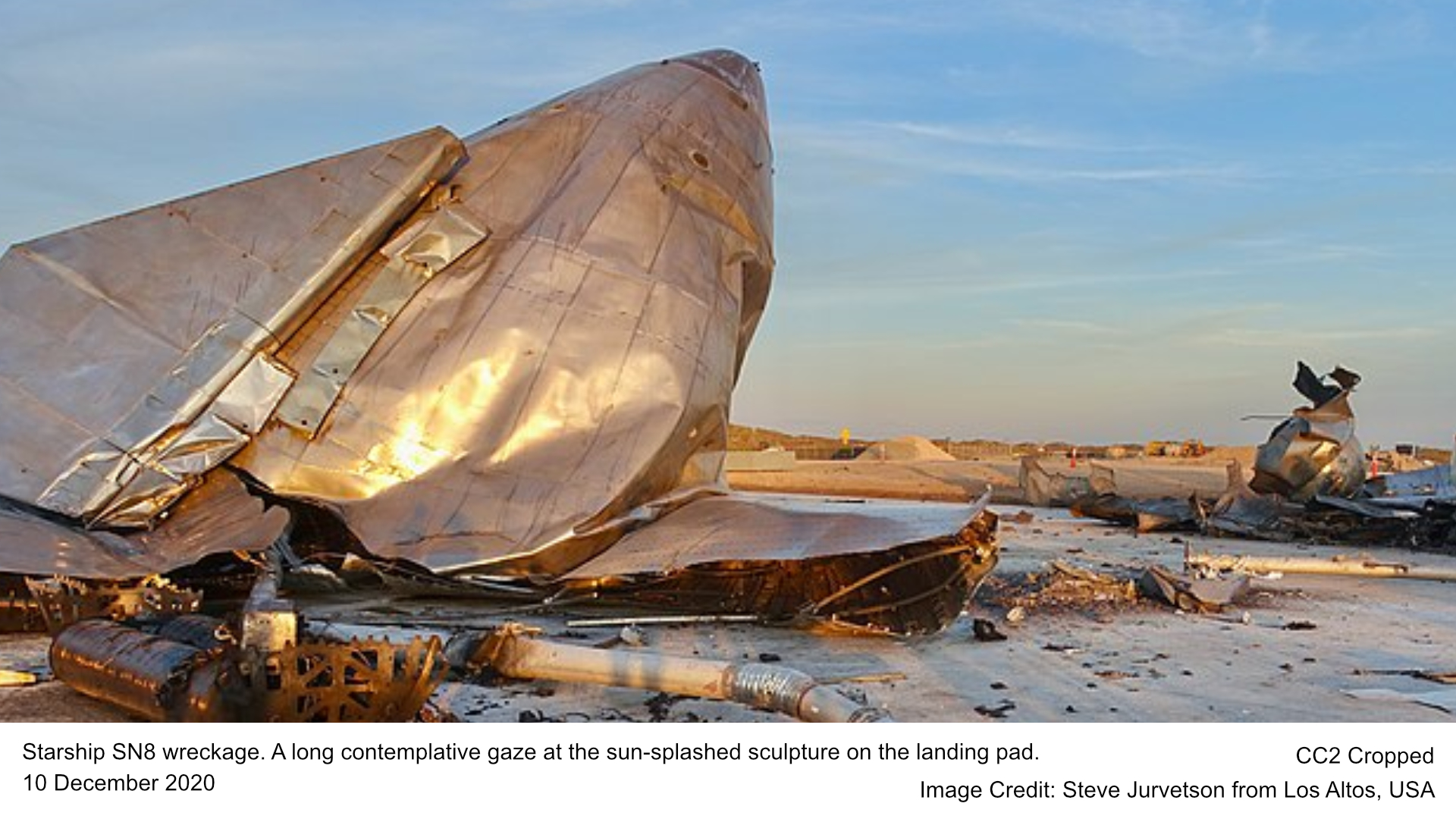SpaceX’s latest test flight of its Starship rocket ended dramatically when the spacecraft’s upper stage failed and disintegrated over the Caribbean. The Federal Aviation Administration (FAA) has grounded future launches while investigating the cause of the failure, which occurred on Thursday during the rocket’s ascent.
Play Count: 3
- Starship’s Partial Success: SpaceX’s Starship rocket achieved a successful booster detachment and controlled return but failed when the upper stage disintegrated due to a suspected fuel/oxygen leak.
- FAA Investigation: The FAA has grounded future launches while investigating the mishap, including reports of falling debris near the Turks and Caicos Islands and potential property damage.
- Progress Amid Failure: Despite the setback, the test advanced reusable rocket technology, including booster recovery and satellite deployment simulations.
- Broader Implications: The failure raises concerns for NASA’s Artemis lunar program, which relies on SpaceX’s Starship, while showcasing the competitive pressure from Blue Origin’s growing capabilities.
A Mission of Mixed Outcomes
The Starship system, which combines a powerful Super Heavy booster with the spacecraft, is the tallest rocket ever built at 403 feet and is a cornerstone of SpaceX founder Elon Musk’s ambition to make life on Mars a reality.
The launch from Boca Chica, Texas, at 5:38 p.m. EST appeared promising at first:
- The Super Heavy booster successfully detached three minutes after lift-off and executed a controlled return to the launch pad.
- The upper stage reached an altitude of 90 miles (146 km) and achieved speeds of 13,245 mph (21,317 kph) before communications were lost.
However, SpaceX later confirmed the upper stage underwent what it described as a “rapid unscheduled disassembly,” a term used to describe catastrophic failures. Musk attributed the incident to a suspected “oxygen/fuel leak in the cavity above the ship engine firewall.”
SpaceX’s iterative approach to rocket testing is built around the concept of “failing forward,” emphasizing rapid development over perfect execution. This philosophy has propelled SpaceX to the forefront of the aerospace industry but has also drawn criticism for potential risks associated with high-stakes launches. The FAA’s rigorous oversight reflects growing scrutiny over private space companies as they take on critical roles in governmental and commercial missions.
FAA Investigation and Flight Restrictions
The FAA has launched a “mishap” investigation and will review SpaceX’s findings before granting approval for future launches. It also activated a debris response area, rerouting aircraft and briefly holding flights to avoid potential hazards. Several planes had to divert due to low fuel levels while waiting for clearance to resume operations.
Reports of falling debris near the Turks and Caicos Islands are being examined, though no injuries have been reported. The FAA is also investigating claims of property damage in the region.
Advancing Space Exploration Amid Setbacks
Despite the upper stage failure, the mission marked progress in other areas:
- The successful booster recovery was a significant achievement, with SpaceX engineers perfecting its return to the launch pad’s mechanical arms.
- The test included 10 dummy satellites, mimicking SpaceX’s Starlink deployment operations. While these were ultimately destroyed, the exercise provided valuable data for future satellite missions.
- The updated Starship featured key enhancements, including 300 additional tons of propellant, improved heat-resistant forward flaps, and upgrades to its propulsion system.
SpaceX emphasized the importance of learning from failures to improve reliability and performance for future missions.
Implications for SpaceX and NASA
The mishap has implications for NASA’s Artemis program, which plans to use a modified Starship for lunar landings. NASA has closely followed SpaceX’s progress as it relies on the company to develop reusable spacecraft for future Moon and Mars missions.
Meanwhile, Jeff Bezos’ Blue Origin achieved a milestone of its own just hours before SpaceX’s launch, sending its New Glenn rocket into orbit for the first time. Though the booster failed to land on a floating platform, the launch demonstrated Blue Origin’s growing capabilities in the competitive space industry.
Looking Ahead
Musk remains optimistic about resuming Starship launches, suggesting the next flight could occur as early as next month. However, FAA approval will depend on the outcomes of the ongoing investigation. SpaceX’s journey toward reusable, interplanetary spacecraft continues to face technical challenges, but each test offers lessons that bring Musk’s vision closer to reality.







Be First to Comment